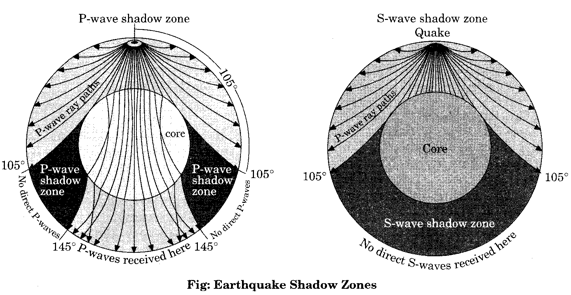What is shadow zone? Write the …

CBSE, JEE, NEET, CUET
Question Bank, Mock Tests, Exam Papers
NCERT Solutions, Sample Papers, Notes, Videos
Posted by Pritom Dvrma 6 years, 4 months ago
- 1 answers
Related Questions
Posted by Gurmandeep Singh Sekhon 1 year, 6 months ago
- 1 answers
Posted by Ananya Rathore 1 year, 4 months ago
- 0 answers
Posted by Manyata Jaiswal 1 year, 4 months ago
- 0 answers
Posted by Balram Kumar 1 year, 4 months ago
- 1 answers
Posted by Jennifer Roy 1 year, 5 months ago
- 0 answers
Posted by Letminlen Letminlen 1 year, 5 months ago
- 0 answers
Posted by Roopal Thakur 1 year, 6 months ago
- 1 answers

myCBSEguide
Trusted by 1 Crore+ Students

Test Generator
Create papers online. It's FREE.

CUET Mock Tests
75,000+ questions to practice only on myCBSEguide app
 myCBSEguide
myCBSEguide

Sia ? 6 years, 4 months ago
Earthquake waves get recorded in seismographs located at far off locations. However, there exist some specific areas where the waves are not reported. Such a zone is called the 'shadow zone'. The study of different events reveals that for each earthquake, there exists an altogether different shadow zone. Seismographs located at any distance within 105° from the epicentre, recorded the arrival of both P and S -waves. However, the seismographs located beyond 145° from the epicentre, record the arrival of P-waves but not that of S-waves. Thus, a zone between 105° and 145° from epicentre was identified as the shadow zone for both the types of waves. Figures given below show the shadow zones of P- and S-waves.

The entire zone beyond 105° does not receive S-waves. The shadow zone of S-wave is much larger than that of the P-waves. The shadow zone of P-waves appears as a band around the earth between 105° and 145° away from the epicentre. The shadow zone of S-waves is not only larger in extent but it is also a little over 40 per cent of the earth surface.
0Thank You